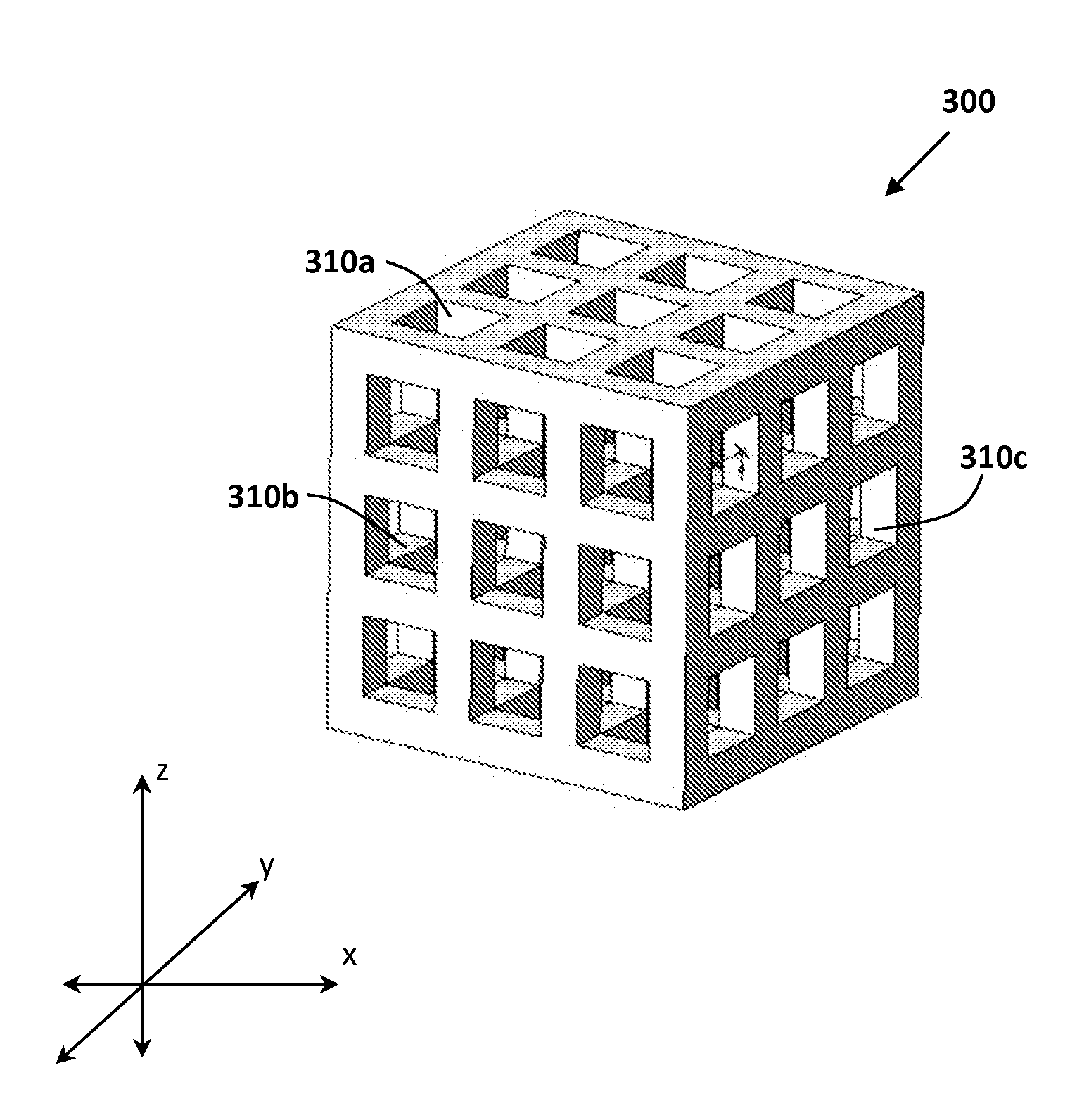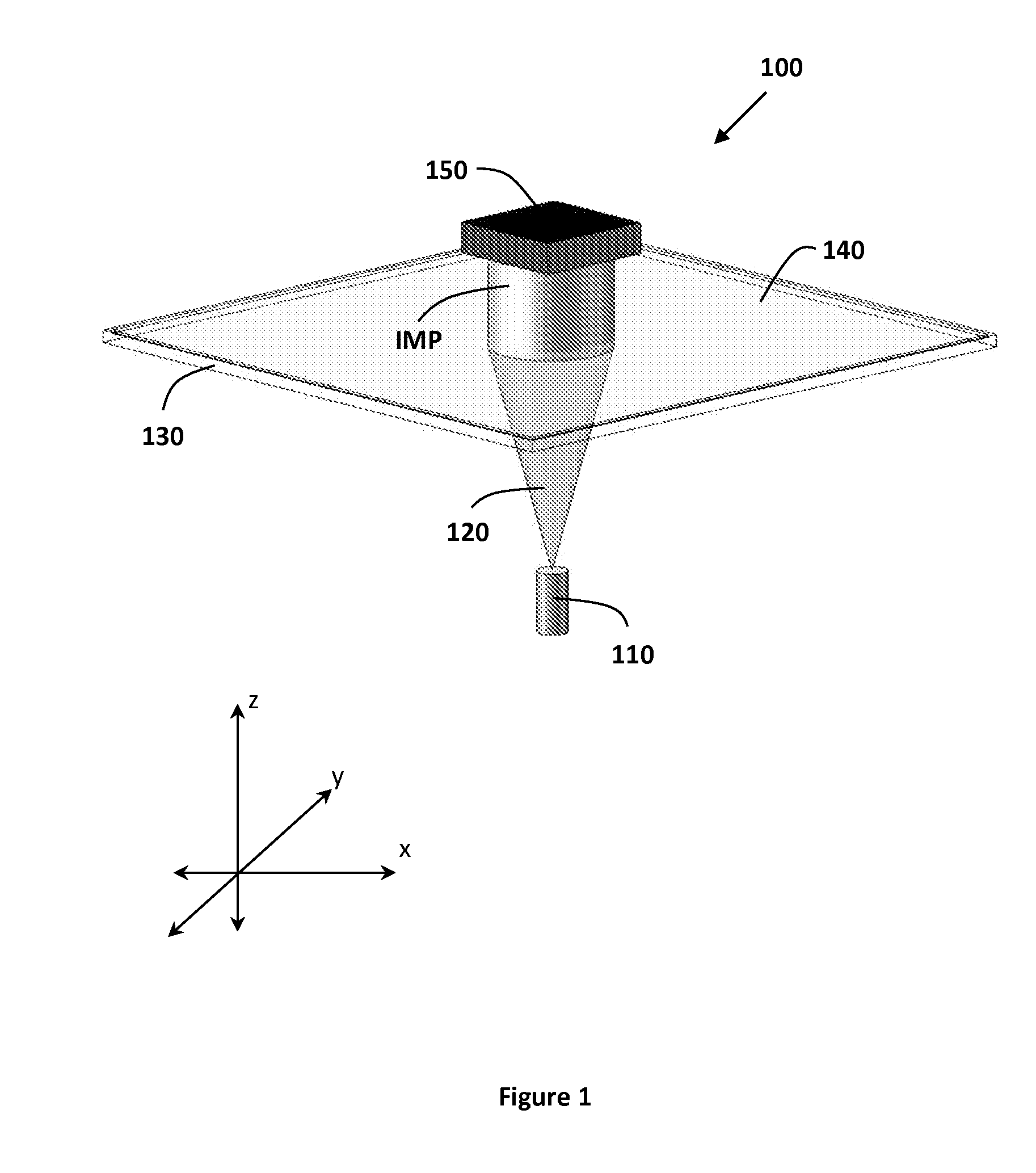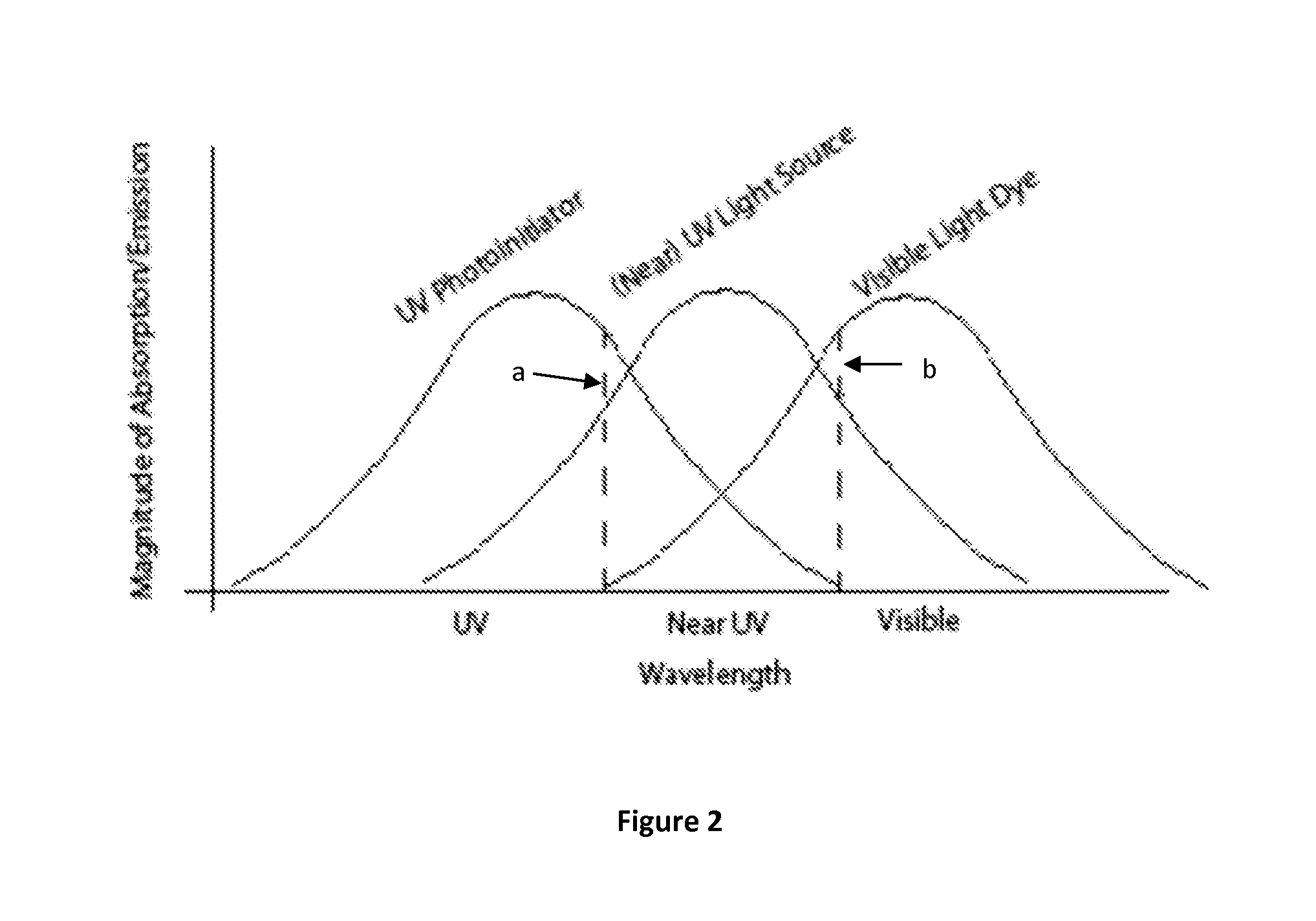Absorbant and reflecting biocompatible dyes for highly accurate medical implants
a biocompatible dye and high-accuracy technology, applied in the direction of impression caps, instruments, prostheses, etc., can solve the problems of not preventing tissue regeneration or remodeling, affecting the quality of medical implants, so as to increase the strength of 3d printed tissue and increase the strength of manufactured parts.
- Summary
- Abstract
- Description
- Claims
- Application Information
AI Technical Summary
Benefits of technology
Problems solved by technology
Method used
Image
Examples
example 1
[0100]A first embodiment focused on the calibration of the cDLP additive manufacturing system to accurately render scaffolds with predictable properties of resorption, cell attachment and proliferation, host incorporation, and tissue regeneration.
[0101]FIG. 8 illustrates isometric, front, and top views, respectively, of an exemplary scaffold 500. The goal of the calibration study was to calibrate the cDLP system for the additive manufacturing of scaffolds with the “plate and post” geometry of scaffold 500. In the embodiment, the cylindrical test scaffold was 6.0 millimeters in diameter and 12.4 millimeters in length. The diameter of the vertical channels 510 was 800 micrometers. The plates 520 were 400 micrometers thick and 800 micrometers apart from each other. The posts 530 between the plates, were 600 micrometers in diameter. The calibration of the cDLP process consisted of at least six steps.
[0102]The first step in the calibration procedure was to polymerize single layers of the...
example 2
[0116]This embodiment was implemented on the Perfactory® UV device having a 60 millimeter lens. A relatively small amount of dye was necessary (for example, 0.01 to 0.2 wt %) of overall resin mass. The dye used in this study was at a greater concentration than is typically used in industrial applications, up to 0.5% of overall polymer mass. It is important that the dye be biocompatible. In this study, a yellow chromium azo dye was used. The amount of initiator used in this study was 2% of Irgacure® 819 (BASF (Ciba), Florham Park, N.J.). The substance used in this study to reduce the viscosity of the resin was diethyl fumarate (DEF), the monomer precursor of PPF.
[0117]The designed (i.e., in CAD software) plate thickness and post diameter were 0.4 millimeters and 0.6 millimeters, respectively. The ten-plate scaffolds generated had an average plate thickness of 0.43±0.02 millimeters, and average post thickness of 0.63±0.01 millimeters. The precision of the features (i.e., low standard ...
example 3
[0118]For this embodiment, the Perfactory device used had a 60 millimeter lens providing an in-plane native resolution of 71 micrometers and 35.5 micrometers utilizing pixel-shifting. The resorptive polymer, polypropylene fumarate) (PPF), was used. A yellow chromium azo dye was added. The initiator used in this embodiment was Irgacure® 819 (BASF (Ciba), Florham Park, N.J.). The substance used to reduce the viscosity of the PPF was diethyl fumarate, the monomer precursor of PPF. The between plane energy settings were calibrated to achieve a voxel height of 120 micrometers when using a 200 mW / dm2 irradiance, and an exposure time of 120-240 s. The scaffold shape was composed in a Computer Aided Design (CAD) program and 6 scaffolds were rendered using a 120 s exposure. 2 scaffolds were later rendered using a 240 s exposure. 10 measurements of the overall diameter of each scaffold were collected using calipers. The intended scaffold diameter was 6 mm.
[0119]The scaffolds (n=6) rendered us...
PUM
| Property | Measurement | Unit |
|---|---|---|
| sizes | aaaaa | aaaaa |
| molecular weight | aaaaa | aaaaa |
| molecular weight | aaaaa | aaaaa |
Abstract
Description
Claims
Application Information
 Login to View More
Login to View More - R&D
- Intellectual Property
- Life Sciences
- Materials
- Tech Scout
- Unparalleled Data Quality
- Higher Quality Content
- 60% Fewer Hallucinations
Browse by: Latest US Patents, China's latest patents, Technical Efficacy Thesaurus, Application Domain, Technology Topic, Popular Technical Reports.
© 2025 PatSnap. All rights reserved.Legal|Privacy policy|Modern Slavery Act Transparency Statement|Sitemap|About US| Contact US: help@patsnap.com



